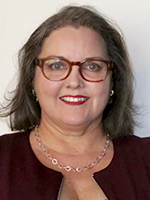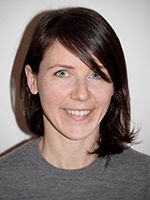
More vigilance is needed to understand medical errors associated with information technology.
With much of our health information being migrated to the virtual world, Vancouver Coastal Health Research Institute researchers Leanne Currie and Chantelle Recsky examine the incidence of technology-associated errors.
“As technology is deployed in the health care setting, its use is resulting in a new set of medical errors and unintended consequences.”
“While technology has been good at dealing with many factors that used to cause medical errors in the past—such as illegible handwriting—there is a subset of problems caused by technology that should be accounted for and addressed going forward,” says Recsky.

For example, Currie cites a case in the United States where a young patient1 received 38 antibiotic pills instead of the normally prescribed single pill. Several factors contributed to this incident, including software that was programmed to provide weight-based dosing for patients under a certain age. Also at issue was not requiring that human eyes review medications during night shifts, coaching clinicians to ignore software system alert notifications and an overreliance on the accuracy of the software.
“The patient had a seizure, but survived without any long-term consequences,” says Currie. “This kind of incident is happening in Canadian health care settings and, up until now, it has not been well understood.”
Reporting system is the first in the world to monitor technology’s role in medical errors
Currie and Recsky’s research looks at incident reports submitted to the BC Patient Safety and Learning System (BCPSLS)—a web-based tool used to report and learn from adverse events, near misses and hazards that occur in the delivery of health care. Their analysis focuses on primary care and community settings at Vancouver Coastal Health (VCH).
Prior to this two-year study, a question was added to the BCPSLS that asks: “Was a computer involved in this event?” The research team began tracking responses from non-acute settings in November 2016.
“BCPSLS is one of the first systems in the world to include a question about computer involvement in a reported adverse event, near miss or hazard.”
In a community setting, adverse events could include such things as a privacy breach in which medical files belonging to one patient end up in the hands of another, says Currie, who is supervising the project. “If software fails, a referral may not get transmitted and the patient may not receive a follow-up appointment request.”

Included in their study is a review of VCH information technology (IT) help desk requests that seem to be related to a technology problem. In addition, the research team is conducting a systematic systems analysis with a sociotechnical approach to take a deep dive into a single adverse event reported during the study period.
“The systematic systems analysis is an advanced method of patient safety learning to better understand the context of an adverse event, such as the place it occurred, health care unit involved and umbrella organization,” notes Recsky.
The final part of their study, which is also Recsky’s doctoral dissertation, will examine the potential risks associated with an individual piece of technology based on previously reported risks and data about how it was used by clinicians.

Currie and Recsky plan on using their study results to develop a best practices toolkit that can help clinicians identify and mitigate technology mediated adverse events.
“We want health care organizations to be aware of the role technology can play in medical errors, and methods they can use to minimize the probability of unintended consequences associated with technology,” says Recsky. “We are very fortunate to have the opportunity to partner with VCH for this research, and hope to help improve care for patients both locally and beyond.”
This study is conducted in partnership with Allison Muniak, executive director of Quality and Safety at VCH, and Lorraine Blackburn, vice-president of Professional Practice and chief clinical information officer at VCH, as part of a CIHR Health Systems Impact Fellowship program.


